Key Takeaways
| Topic | Summary |
|---|---|
| Introduction | Interactive displays and whiteboards are tools used in meetings, with interactive displays offering advanced features like touchscreens, annotation tools, and device integration. |
| Benefits of Interactive Displays | Interactive displays enhance collaboration, engagement, visual quality, and user experience through features like multi-touch, wireless sharing, and 4K resolution. |
| Limitations of Whiteboards | Whiteboards are limited by single-point touch, calibration needs, lower resolutions, and ongoing maintenance requirements. |
| Comparison | Interactive displays offer superior ease of use, collaboration capabilities, display quality, and lower maintenance compared to whiteboards. |
| Use Cases | Interactive displays excel in hybrid meetings, brainstorming sessions, training, video conferencing, and software integration scenarios. |
| Software Integration | Interactive displays can integrate with annotation tools, cloud storage, video conferencing software, and productivity suites for enhanced functionality. |
| Cost and Investment | While interactive displays have a higher upfront cost, they offer potential long-term savings, increased productivity, and a better return on investment. |
| The Hikvision DS-D5C65RB/B 65-inch 4K Interactive Display Screen offers a stunning 4K resolution, 20-point multi-touch capability, and seamless software integration, making it ideal for collaborative meetings and presentations. Buy Now |
In today’s fast-paced business world, meetings are a crucial part of daily operations, serving as a platform for collaboration, decision-making, and exchanging ideas. While traditional whiteboards have been a staple in meeting rooms for decades, the rise of hikvision interactive displays has brought a new level of functionality and engagement to these gatherings. But are these cutting-edge displays truly better than whiteboards for meetings? Let’s dive in and explore the advantages and limitations of each technology.
Introduction to Interactive Displays and Whiteboards
First, let’s define what we mean by interactive displays and whiteboards. An interactive display, also known as a smart board or interactive whiteboard, is a large touchscreen display that allows users to interact with digital content directly on the screen. These displays often come equipped with advanced features such as annotation tools, screen mirroring, and integrated collaboration software.
On the other hand, a traditional whiteboard is a low-tech solution consisting of a plain white surface where users can write or draw using dry-erase markers. While whiteboards have been a reliable tool for meetings, they lack the advanced capabilities and interactivity offered by modern interactive displays.
Benefits of Hikvision Interactive Displays
Hikvision interactive displays offer a range of benefits that can significantly enhance the meeting experience and improve collaboration among participants. Here are some key advantages:
Enhanced Collaboration and Engagement: With their large touchscreens and intuitive user interfaces, interactive displays encourage active participation and engagement from all attendees. Multiple users can simultaneously annotate, draw, or highlight on the screen, fostering a more collaborative and interactive environment.
Seamless Device Integration: One of the standout features of interactive displays is their ability to connect personal devices for seamless sharing of information. Participants can wirelessly mirror their laptop, tablet, or smartphone screens onto the interactive display, enabling effortless content sharing and real-time collaboration.
High-Quality Visuals: Hikvision interactive displays offer stunning 4K Ultra-HD resolution, ensuring that presentations, videos, and other visual content are displayed with exceptional clarity and detail. This level of visual quality can significantly enhance comprehension and engagement during meetings.
User-Friendly Interface: Interactive displays are designed with user-friendly interfaces, making them intuitive and easy to use. Even for those who are not tech-savvy, the large touchscreens and straightforward controls make it simple to navigate and interact with the display’s features.
Software Integration: Many interactive displays can integrate with popular collaboration software, such as video conferencing platforms, project management tools, and productivity suites. This integration streamlines the meeting process, allowing participants to access and share relevant information seamlessly.
Limitations of Whiteboards
While whiteboards have been a reliable meeting room tool for years, they do come with several limitations that can hinder productivity and collaboration:
Limited Points of Touch: Traditional whiteboards only allow for single-point touch, making them less collaborative compared to interactive displays. Only one person can write or draw on the whiteboard at a time, which can disrupt the flow of discussions and limit active participation.
Calibration Requirements: Whiteboards often require frequent calibration to ensure accurate tracking of writing and drawing. This process can be time-consuming and may disrupt the meeting’s flow, leading to potential frustration and wasted time.
Lower Resolutions and Light Sensitivity: The resolution and image quality of whiteboards are inherently limited, as they rely on physical writing and drawing. Natural light and glare can also affect visibility and readability, which can be problematic in meeting rooms with large windows or bright lighting.
Ongoing Maintenance and Servicing: Whiteboards require regular cleaning and maintenance to ensure optimal performance. Markers can dry out, and the surface can become stained or scratched over time, necessitating replacement or servicing. This ongoing maintenance can be costly and time-consuming.

Comparison of Interactive Displays and Whiteboards
To better understand the differences between these two technologies, let’s directly compare them across several key aspects:
Ease of Use and Collaboration Capabilities: Interactive displays excel in terms of ease of use and collaboration capabilities. With their intuitive touchscreen interfaces and multi-touch support, multiple participants can simultaneously interact with the display, fostering active collaboration and engagement. In contrast, whiteboards are limited to single-point touch, making collaboration more challenging.
Display Quality and Resolution: Interactive displays offer superior display quality and resolution compared to whiteboards. With 4K Ultra-HD resolutions and vibrant colors, interactive displays provide a crisp and immersive visual experience, ensuring that all content is easily visible and legible. Whiteboards, on the other hand, are limited by their physical writing surface and can suffer from visibility issues due to lighting conditions or surface degradation.
Maintenance and Servicing Requirements: Interactive displays generally require less maintenance and servicing compared to whiteboards. While they may require occasional software updates or calibration, their solid-state design and lack of consumable components (e.g., markers) minimize the need for ongoing maintenance. Whiteboards, however, require regular cleaning, marker replacement, and surface restoration, which can be time-consuming and costly over time.
Cost: It’s important to consider both the upfront and ongoing costs of each technology. Interactive displays typically have a higher initial purchase price than whiteboards, but their advanced features and lower maintenance requirements can offset these costs in the long run. Whiteboards may have a lower upfront cost, but their ongoing maintenance expenses and potential need for replacement can add up over time.

Use Cases for Hikvision Interactive Displays
While interactive displays offer a range of benefits, they are particularly well-suited for certain meeting scenarios and use cases:
Hybrid Meetings and Remote Collaboration: With the rise of hybrid and remote work environments, interactive displays have become invaluable tools for facilitating seamless collaboration between on-site and remote participants. Features like wireless screen sharing, video conferencing integration, and cloud-based collaboration tools enable real-time sharing and interactive discussions, regardless of participants’ physical locations.
Brainstorming and Idea Generation Sessions: Interactive displays are ideal for brainstorming and idea generation meetings, where participants can freely annotate, draw, and collaborate on digital canvases. The ability to capture ideas in real-time, combined with the displays’ large touchscreens, fosters a more engaging and productive brainstorming experience.
Training and Educational Settings: Interactive displays are widely used in training and educational settings, as they allow instructors and facilitators to deliver interactive and engaging content. Features like annotation tools, multimedia support, and wireless screen sharing make it easier to capture and retain learners’ attention, leading to more effective knowledge transfer.
Video Conferencing and Virtual Meetings: Many interactive displays seamlessly integrate with popular video conferencing platforms, enabling high-quality audio and video communication during virtual meetings. Participants can share and annotate content in real-time, creating a more collaborative and engaging virtual meeting experience.
Software and Integration
One of the key advantages of interactive displays is their ability to integrate with a wide range of software solutions. Compatible software can significantly enhance the functionality and usability of these displays, enabling features like:
-
- Collaborative Annotation and Markup: Software tools that allow multiple users to simultaneously annotate, draw, and highlight on shared digital canvases, fostering real-time collaboration and idea exchange.
-
- Cloud-Based Content Sharing: Integration with cloud storage and file-sharing platforms enables seamless access and sharing of documents, presentations, and other digital assets during meetings, streamlining the collaborative process.
-
- Video Conferencing and Virtual Whiteboarding: Software that combines video conferencing capabilities with interactive whiteboarding features, allowing remote participants to engage in real-time collaboration and co-creation sessions.
-
- Presentation and Productivity Tools: Integration with popular presentation software and productivity suites enables users to easily share and present content from their familiar applications, enhancing the overall meeting experience.
Cost and Investment
When considering the adoption of interactive displays for meetings, it’s important to address the cost and investment factors. While interactive displays typically have a higher upfront cost compared to traditional whiteboards, there are several factors to consider:
- Initial Investment: The purchase price of an interactive display can vary depending on factors such as screen size, resolution, and additional features. However, many manufacturers, like Hikvision, offer competitively priced interactive display solutions, making them more accessible to businesses of all sizes.
- Potential Long-Term Savings: Despite the higher initial investment, interactive displays can lead to long-term savings through increased productivity, enhanced collaboration, and reduced maintenance costs. By streamlining meetings and enabling more effective collaboration, businesses can realize significant time and resource savings over time.
- Return on Investment (ROI): When considering the potential benefits of interactive displays, such as improved employee engagement, better decision-making, and increased innovation, the long-term ROI can be substantial. Interactive displays can help businesses stay competitive and adapt to changing work environments, ultimately contributing to their overall success.
- Cost Optimization Strategies: Businesses can explore cost-optimization strategies, such as leasing or financing options, to reduce the initial capital outlay and spread the investment over time. Additionally, bundling interactive displays with other meeting room technologies or leveraging volume discounts can help lower the overall cost.
Recommended Product: Hikvision DS-D5C65RB/B 65-inch 4K Interactive Display Screen
The decision to adopt interactive displays or stick with traditional whiteboards will depend on your specific needs, budget, and long-term goals. However, for businesses that prioritize collaboration, innovation, and staying ahead of the curve, interactive displays like the Hikvision DS-D5C65RB/B 65-inch 4K Interactive Display Screen represent a worthwhile investment that can transform the way meetings are conducted and facilitate more productive and engaging collaborations. This state-of-the-art display boasts a massive 65-inch screen with stunning 4K Ultra-HD resolution, ensuring that all content is displayed with exceptional clarity and detail. Whether you’re presenting intricate designs, analyzing data visualizations, or sharing multimedia content, the vibrant colors and sharp images will captivate your audience and enhance comprehension.
One of the standout features of this Hikvision interactive display is its advanced touch technology. With support for up to 20 simultaneous touch points, it encourages active collaboration and engagement among meeting participants. Multiple users can freely annotate, draw, and interact with the display, fostering a dynamic and interactive meeting environment.
Conclusion
In the constantly evolving landscape of modern meetings, interactive displays have emerged as a powerful tool that can significantly enhance collaboration, engagement, and productivity. While traditional whiteboards have served their purpose for decades, the advanced features and capabilities of interactive displays make them a superior choice for meetings in today’s fast-paced and digital-driven world.
From their ability to facilitate seamless device integration and content sharing to their high-quality visuals and user-friendly interfaces, interactive displays offer a more immersive and engaging meeting experience. Additionally, their integration with collaboration software and video conferencing platforms enables real-time collaboration and communication, even with remote participants.
While the initial investment in interactive displays may be higher than whiteboards, their potential long-term savings, increased productivity, and potential return on investment make them a wise choice for businesses seeking to optimize their meeting processes and stay competitive in a rapidly changing work environment.
FAQs
What are the advantages of using a whiteboard in meetings?
While interactive displays offer many advanced features, traditional whiteboards still have some advantages in certain meeting scenarios. Whiteboards are generally more cost-effective, especially for smaller businesses or those with a limited budget. They also require minimal setup and are familiar to most users, making them easy to adopt. Additionally, whiteboards can be useful for quick brainstorming sessions or meetings where simple note-taking and sketching are the primary requirements.
How do interactive displays work?
Interactive displays are essentially large touchscreen displays that allow users to interact with digital content directly on the screen. They typically use advanced touch technology, such as infrared or electromagnetic sensors, to detect and respond to touch inputs. Users can navigate menus, annotate documents, draw diagrams, and interact with various software applications using their fingers or stylus pens. Many interactive displays also support wireless screen mirroring, enabling users to share content from their personal devices seamlessly.
What are the limitations of using an interactive display in meetings?
While interactive displays offer numerous benefits, there are some potential limitations to consider. One concern is the initial investment cost, which can be higher compared to traditional whiteboards. Additionally, interactive displays may require specific software or hardware compatibility, which could limit integration with existing systems. There is also a learning curve associated with using interactive displays effectively, particularly for users who are less tech-savvy. Proper training and user adoption strategies may be necessary to maximize the benefits of these displays.
What are some real-world examples of successful interactive display implementations?
Interactive displays have been successfully implemented in various industries and settings. In education, interactive displays are used in classrooms and lecture halls to enhance teaching and learning experiences. In corporate environments, they are frequently used in meeting rooms, collaboration spaces, and training facilities to foster teamwork and knowledge sharing. Healthcare organizations have also adopted interactive displays for medical training, patient education, and collaborative decision-making. Additionally, interactive displays are commonly used in retail settings for interactive product demonstrations and digital signage.
How do interactive displays impact remote collaboration?
Interactive displays can significantly enhance remote collaboration by providing a shared digital canvas for participants to interact with, regardless of their physical locations. Features like wireless screen sharing, cloud-based whiteboarding, and integration with video conferencing solutions enable real-time collaboration and co-creation sessions. Remote participants can annotate documents, make presentations, and engage in interactive discussions as if they were in the same room. This level of interactivity and engagement can help bridge the gap between on-site and remote teams, fostering a more inclusive and productive collaborative environment.
Can you provide more details about the environmental benefits of using interactive displays?
Interactive displays can offer several environmental benefits compared to traditional whiteboarding solutions. By reducing the need for physical writing materials like markers and erasers, interactive displays can contribute to the reduction of waste and resource consumption. Additionally, many interactive displays are designed with energy-efficient components and power-saving modes, which can help lower overall energy consumption and carbon footprint. Furthermore, by enabling remote collaboration and reducing the need for physical travel, interactive displays can indirectly contribute to lowering carbon emissions associated with transportation.
What are the differences between interactive whiteboards and interactive displays?
While the terms “interactive whiteboard” and “interactive display” are sometimes used interchangeably, there are a few key differences between the two technologies:
-
- Size and Resolution: Interactive displays typically offer larger screen sizes and higher resolutions compared to traditional interactive whiteboards, providing a more immersive and visually stunning experience.
-
- Touch Technology: Interactive displays often employ advanced touch technologies, such as infrared or electromagnetic sensors, allowing for more precise and responsive touch interactions.
-
- Integration and Connectivity: Interactive displays are designed with better integration and connectivity options, enabling seamless wireless screen sharing, video conferencing, and compatibility with various software applications.
-
- Portability: While interactive whiteboards are usually wall-mounted or fixed installations, some interactive displays are designed to be portable, allowing for more flexibility in usage.
-
- Functionality: Interactive displays often offer a wider range of features and functionality beyond just writing and annotation, such as multimedia playback, internet browsing, and interactive presentations.
How can interactive displays be used in remote work settings?
Interactive displays can be invaluable tools in remote work settings, enabling effective collaboration and communication among distributed teams. They can be used in virtual meetings and video conferences, allowing remote participants to share content, annotate documents, and engage in interactive discussions as if they were in the same room. Additionally, interactive displays can be used for remote training sessions, collaborative design reviews, and interactive presentations. By providing a shared digital canvas and facilitating real-time collaboration, interactive displays can help bridge the gap between remote team members, fostering a more cohesive and productive remote work environment.
What are the cost implications of using interactive displays in the workplace?
While interactive displays often have a higher upfront cost compared to traditional whiteboards, it’s important to consider the long-term cost implications and potential return on investment. Interactive displays can lead to increased productivity, enhanced collaboration, and reduced operational costs over time. By enabling more efficient meetings, fostering better decision-making, and facilitating remote collaboration, businesses can potentially realize significant cost savings in areas such as travel expenses, productivity gains, and reduced need for physical meeting spaces. Additionally, many interactive display manufacturers offer leasing or financing options to help spread out the initial investment over time. Ultimately, the cost implications should be evaluated within the context of each organization’s specific needs and goals.




